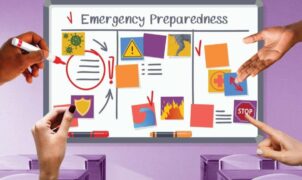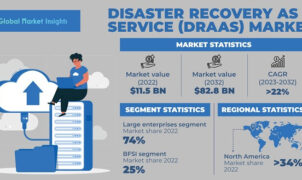Many of you might be wondering, what is a Disaster Recovery Plan (DRP)? What stages does it involve during its execution? In this article, the admin will provide detailed insights. Let’s explore together.
1. What is a Disaster Recovery Plan?
Disaster Recovery Plan (DRP), also known in the industry as a plan for disaster recovery, is a document that guides and supports the recovery of data after a disaster caused by nature or human actions.
In the disaster recovery plan, it is a crucial part of the organization’s business plan. The main purpose of creating a DRP is to assist the IT department in recovering functions and data to ensure the stable operation of the system.
When initiating the planning process, the organization needs to analyze the impact on business operations. Through this, one can identify the most critical functions and requirements to bring operations back after a disaster.
Moreover, in addition to developing a recovery plan, the organization also needs to train employees to implement it. Providing them with sufficient information and knowledge is essential for handling issues when they occur.

2. Stages of Implementation in Disaster Recovery Plan:
The disaster recovery implementation plan is divided into smaller stages. Each stage has specific tasks to ensure the effectiveness of operations, such as:
Risk Assessment and Analysis:
The initial step in building a DRP is to assess the extent of damage and analyze the risks involved. Furthermore, the plan needs to specify the team members responsible for identification, notification, and calculation of the incurred damages.
Key assessments in the DRP should include:
- Identifying the source of the disaster issue.
- Estimating the occurrence rate and maximum damage level.
- Areas primarily affected.
- Damage to products, equipment, resources, etc.
- Parts that need replacement.
- Current status of the ongoing issue.
- Important information to be collected.
- Estimated time to address the issue.
Detailed Planning:
After completing a detailed risk assessment, the next step is detailed planning. In this phase, the roles of each team member with specific tasks need to be clearly defined. Some aspects to consider include:
- Compile a list of everything that needs recovery and prioritize it.
- Clearly outline each procedure.
- Specify the roles of team members with specific tasks.
- Establish a communication, reporting, and evaluation system.
- Develop a timeline and schedule for plan activities.
- Equally distribute necessary resources and equipment.
- Establish standards and operations.
- Identify and input critical data sources into the DRP.
- Develop assessment procedures and evaluations.
- Build a profile for data recovery after a disaster.
Implementing the Disaster Recovery Plan:
As soon as the detailed plan is completed, the organization will move on to the implementation phase. All steps need to be carried out according to the pre-established schedule. Implementation should be closely monitored to ensure the quality of work.
Integrating Disaster Recovery Plan with Project Plans:
As you may know, recovery is a collective effort rather than an individual task. Therefore, in this activity, the disaster recovery plan needs to be seamlessly integrated with the overall project plan. This phase includes testing and assessing the feasibility of the recovery plan. The integration process contributes to ensuring optimal use of resources and efforts, aligning with the overarching goals of the entire project.
Restoring the Entire System:
The final stage in the Disaster Recovery Plan involves restoring after a disaster and stabilizing the situation. When the testing and recovery process concludes, the restoration phase begins and may last for several weeks.
During the restoration and recovery process, attention should be given to:
- Ensuring that no residual consequences or unaddressed threats remain.
- All team members returning to their initial positions.
- Proper relocation of all resources used.
Conclusion:
In summary, we’ve introduced you to what a Disaster Recovery Plan is. Stay tuned for upcoming articles to get more useful information.
Cre: cuudulieu24h


















































































































































